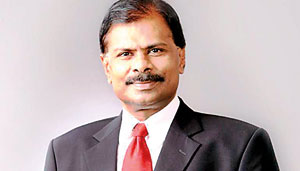Entrepreneurial Branding – Denzil Indrajith Perera
View(s): Creating and sustaining brands to cut through diverse individuals with unique personalities and behavioural patterns is not an easy task. In other words, maintaining inclusiveness is much harder than being an exclusive brand. Be it a brand focuses on capturing the mass market or a niche market, each one will encounter its own set of risks and challenges.
Creating and sustaining brands to cut through diverse individuals with unique personalities and behavioural patterns is not an easy task. In other words, maintaining inclusiveness is much harder than being an exclusive brand. Be it a brand focuses on capturing the mass market or a niche market, each one will encounter its own set of risks and challenges.
The Sri Lankan market is merely an island, where each brand has limitations in expanding its reach: no matter how hard one tries, it will still be capturing a population of merely 22 million people. In this backdrop, creating, and sustaining brands have only been limited to a point of reaching a given sales target. Nevertheless, most importantly, there have been brands which have cut through the clutter in the local market and have been capable of reaching the international market.
Dilmah is one such brand which has been successful in dominating certain international markets, with its origin in Sri Lanka. Mlesna (Tea), Kumarika (Hair Oil), Spa Ceylon, Siddhalepa and Damro are some of the other exemplary brands which have gone beyond the boundaries of the country to reach global markets. Brands such as ODEL (herein, referred to as OPLC) was successful as it became a part of the lifestyle of its carefully carved out niche in the market.
On the other hand, OPLC was competing in a tough category which was more competitive as far as the dynamics are concerned. Fashion has always been rewarding and sexy, yet, it has always been challenging and dynamic. It has a lot more to do with the overall customer experience and intangible aspects of the brand, than tangibles such as, quality and the price tag.
In essence, just being a brand which is bought and consumed is not enough to top the list in the sector. ODEL proved that a brand becomes successful when it becomes a part of the lifestyle of its target audience.
“Now it’s very important to realise that a brand is built in and at the very core, at the very essence of the brand is its core proposition and that is something the marketer has to work out not the advertising agency.” (Late Professor Liyanage). Brand essence should be in-built… not bolt-on by an advertising campaign. What he essentially highlights is that; before being a brand, it needs to be a better product which delivers quality. It’s only then the advertiser can create an aura around the brand in creating emotional connections with the brand and the audience.

Professor Liyanage! I dedicate this article to late Professor Liyanage who was my inspiration and my guru at PIM when I was reading for my MBA (2009/10). This article is based on the thesis I pursued under his supervision and guidance. The case study was on ODEL and how the brand was built by its original owner, Otara. May this be a tribute to Late Professor Liyanage!
“There will be no branding or existence of brands in the absence of advertising”. This was mentioned decades ago by the renowned business leader; Henry Ford when he said, ‘A man who stops advertising to save money is like a man who stops a clock to save time’. However, in paving the path for the advertiser to come up with creative instincts, the brand owner should provide the right direction and guidance.
In the absence of a well-thought strategy to develop the brand, the advertiser will be a sheer communicator who has no aim in his communication. Moreover, a brand must go beyond the level of simply providing value for money. In fact, a successful brand can always create “value” than creating “value for money”. Price will become irrelevant at a point where the brand reaches and touches the hearts of its consumers. “Because at OPLC, we offer you an almost spiritual experience to your shopping. Even if you just rather sit and do nothing, we can still inspire your mind, stimulate your body and stir your soul.” Otara (2010). A service brand not only touches the body, but it also touches the heart and soul of its audience. Otara was the first to realize it in the ready-made fashion industry in Sri Lanka and to cater to the needs of physical mental and divine needs of consumers. She could challenge the local ready-made fashion outlet space with a touch of elegance which fulfilled the needs of the affluent market through her brand ODEL (which was coined after her name: Otara Del which carries the meaning – Reincarnation.
A brand must be felt than just being bought. It must be a friend than just a consumable and a brand must be felt emotionally than just being sensible enough to be bought.
It must pass through the phases to reach this point of being close to the hearts of the customers or the consumers. Awareness-consideration-trial are the three main aspects of any brand plan to address at a much broader level. If the brand can do justice to the decision taken by the customer to buy it, the repeat purchase will happen subsequent to the trial. However, the bottle neck for any new brand would be the trial period.
 As a brand passes through these three stages, it will get closer to the hearts of its target market, and it will in turn create loyalty towards the brand. Therefore, the pivotal task of a brand is to connect the head (Logical needs of the consumer), heart (Emotional needs of the consumer) and the hands (Customer/Consumer engagement) of the consumers to remain on top of the mind, so that it will in the long run be in the hearts of the customers.
As a brand passes through these three stages, it will get closer to the hearts of its target market, and it will in turn create loyalty towards the brand. Therefore, the pivotal task of a brand is to connect the head (Logical needs of the consumer), heart (Emotional needs of the consumer) and the hands (Customer/Consumer engagement) of the consumers to remain on top of the mind, so that it will in the long run be in the hearts of the customers.
For a Brand to Thrive
1. Word of mouth communication and PR: Advertising and promotions can create awareness about the brand; but there is no way of estimating how much of advertising money is wasted without reaching the target audience. Therefore, it’s recommended to put a little bit of money behind PR and tactful WOM communication. WOM refers to, “word of mouth”, as well as “word of mouse”.
2. Increasing usage of internet – information super-highway has created immense opportunities for brand marketers to come up with creative messages which are tend to be shared by online social media users inducing WORD OF MOUSE (Sharing, Liking, Commenting etc.)
3. Innovation and Consistency: Innovation can mean a lot when it’s consistent. Continuous innovation in every aspect of the business is the key to success. It’s not just the products but also the processes. Brands should evolve; if it gets stagnant, it can fade away from the minds of consumers over a period while taste and expectations of consumers keep changing.
4. However, it should evolve in a consistent way, keeping brand values at the core. Frequent changes in brand values and the stand (Strategy or the overall direction) are not recommended.
5. Brand Owner: One of the critical success factors of a brand which can decide if the brand will survive in the long run or thrive. Great brands created in the local context such as Dilmah, Mlesna, Spa Ceylon and Odel had their own brand owners who devoted his/ her life to the brand, until it could stand on its own.
6. Successful brands always grow with a person who has his/her ownership of it. Brands can fail in the event of frequent changes in brand custodians. Nevertheless, having an owner wouldn’t mean much, if the owner has not got the right skills to blend the opportunities in the market with creative insights, which determines as to how the brand should be presented to the market in each “window of opportunity”.
7. Pleasing Experience: Omnibus experience is referred to as the consistency in delivering the same experience in different channels and different media. Be it online or offline, it should deliver an equal experience.
8. Also, the brand should deliver a consistent experience, across many different channels. Even though, OPLC has been able to increase its reach, providing the same experience at all locations has become impossible. This has created a situation where the perceived value of the brand is confronted with a declining trend, as it’s about the overall experience the customer receives at different touch points. The decision-making stage, the shopping or buying stage, consumption and post-consumption are four main facets to be managed with extra care and consistency.
Branding Flower and Petals
The following model is based on, how a brand could be developed in a sustainable manner. Brands may rise and fall and may die a natural death after a while. Some brands never reach the stage of growth or maturity in its life cycle.
The metaphor used in the model to denote a brand is a flower. If a brand was a flower, it would have the following elements which work in harmony to create a lasting impact in its customers’ mind. In the same way, if a brand is considered, there are key elements that need to be identified regarding the brand which collectively make the brand successful in the market. If a brand was a flower, the petals of the same would have an equal impact on the beauty of the flower. It will be quite costly to miss at least one of those petals if the flower is to seem prettier.
The areas recommended are the petals of the flower, which make it a perfect brand in general and more specifically in the services sector. At the same time, the petals cannot be on their own, especially, if the supporting elements are not strong enough or supportive enough to hold the petals. Brand awareness and brand benefits to the customer could also be the petals which give its beauty, attraction, and aroma. In the same way, for a brand to be successful, it needs to have a solid structure which supports the petals.
n Receptacle: The expanded tip of a flower stalk or axis that bears the floral organs or the group of flowers in a head. For OPLC, it’s the differentiation. Every brand needs to have its own ‘stand’ in the market. (The stand is to be understood in the context of the Space, Scope, Stand and Standing; a framework introduced by Late Prof. Liyanage in his teaching. In this context the Stand would essentially mean the strategy: either differentiation or cost leadership).
n Pedicel: This is the stalk supporting the flower. For a brand to grow well in the market, a committed pedicel is required. Otara was the pedicel for OPLC. Meryl J. Fernando was the pedicel for Dilmah. Anselm Perera was the Pedicel for Mlesna, Dr. Hettigoda was the Pedicel for Siddhalepa and Hinni Appuhamy was the pedicel for Maliban. For a brand to grow and sustain, it should become someone’s baby.
Brand-ownership, alongside both left and right brained thinking is required for a brand to do well in the market. A left brain or right brain driven person would be skewed towards one direction. What’s required is the right balance of both ends in the person who takes care of the brand. Another important factor highlighted here is, that, for a brand to thrive, the brand owner should dedicate his/ her life and should start living with it. It’s in this context, that the need of entrepreneurial brand ownership is appreciated over a paid form of a designated brand manager’s role, who would only do the part of performing responsibilities confined to the JD of the brand manager.
Another limiting factor would be the ease of decision making and the ability to take risks, while responding to opportunities in the market as a paid employee (Brand Manager). The flip side of the coin is that those who realize the difference between the role of a paid employee as a brand manager and an entrepreneurial brand manager would minimize the gap between the two.
n Sepal: This refers to the hard factors or the visible, tangible factors. These are the calyx of the flower. This could mean all four Ps or seven Ps in marketing; but, essentially the product quality, availability, advertising, and communication; the right price which denotes and support positioning of the brand, ambience, and trained staff to cater to the market.
n Petals: The soft factors (Intangibles)–Consistent brand identity, Brand experience, Brand personification and CSR, can be crucial in deciding whether the brand is going to remain strong in the market or not. Consistency in communication and providing a pleasing experience in the case of service brands will be vital to success. CSR and brand personification could be the icing on the cake. Brand personification could mean a lot in service branding as it’s intangible and invisible. For a brand to thrive in the market, all four aspects should come hand in hand, in delivering the brand promise.
Summary
Even though, the above four factors are highlighted as the key elements of a successful brand, these alone wouldn’t make the brand a successful one. In addition, a lot of planning and passion will go into a brand; and on top of all the said factors, the visionary leadership of brand owners can determine how long a brand can remain in the market. After all, a vision without execution is hallucination.


